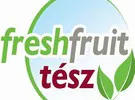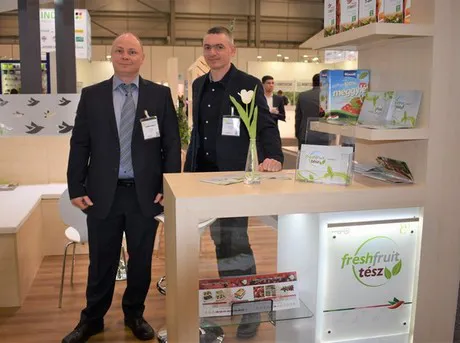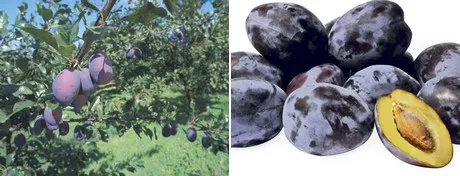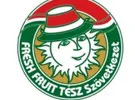 for the producers from the Central European cultivation areas. Sales cooperative Fresh Fruit Tész from South Hungary also has a large clientele in the Federal Republic and mainly provides zwetschge plums, sour cherries and pointed peppers. But currently, the competition in the east of Europe is particularly heavy, says owner Juhos Csaba. The Balkan countries in particular are clearly gaining ground.
for the producers from the Central European cultivation areas. Sales cooperative Fresh Fruit Tész from South Hungary also has a large clientele in the Federal Republic and mainly provides zwetschge plums, sour cherries and pointed peppers. But currently, the competition in the east of Europe is particularly heavy, says owner Juhos Csaba. The Balkan countries in particular are clearly gaining ground.Now, during the winter months, it is relatively quiet for Mr Csaba and his colleagues. That is one of the reasons the Hungarian marketers are well represented at the Fruit Logistica trade fair, striving to acquire new German customers. Because starting in June, the export season will commence again and the approximately 430 producers from the region of Bács-Kiskun will harvest, select and package large quantities of drupes and pointed peppers for markets all around Europe. “The zwetschge plums are our main export product,” says Csaba . “In about two and a half months we will produce some 3,000 tons of them, which we will sell throughout Europe, from Lithuania to Holland.”

Competition
Compared to other products, the competition in the zwetschge plum business is pretty heavy. This is because lots of the producers in former Yugoslavia and Poland over the years have specialized themselves in the field of zwetschge plums cultivation. Csaba: “Price differences between German and Hungarian produce at the moment are still relative large. At the peak of the season they can be at about 50 percent. However, the produce from the Balkans is the cheapest. That means that we ourselves inevitably have to lower our prices in order to stay competitive.”
Apart from that, according to Csaba the demands from German retailers are a bit contradictory. His German customers are mainly interested in zwetschge plums with a diameter of about 32 to 40 mm. Then, on the one hand, they must be hard so the losses from bruising will stay small. “But on the other hand, the sweetest fruit is preferred by the consumers. And those two elements are quite difficult to combine,” says Csaba.

In contrast to western European cultivation methods, experienced marketers are currently noticing that the Hungarian cultivation methods are not so different anymore. The cultivation technology has not yet developed to the extent that the harvest can be pulled forward or pushed. And protective measures such as nets or analysing technologies are currently still in their infancy. On the other hand, the Hungarian producers are also testing new breeds. Csaba: “Regarding zwetschge plums, we now have about eight varieties under cultivation, but the Cacanska lepotica has been our main variety for a long time.”
For more information:
Fresh Fruit Tész

